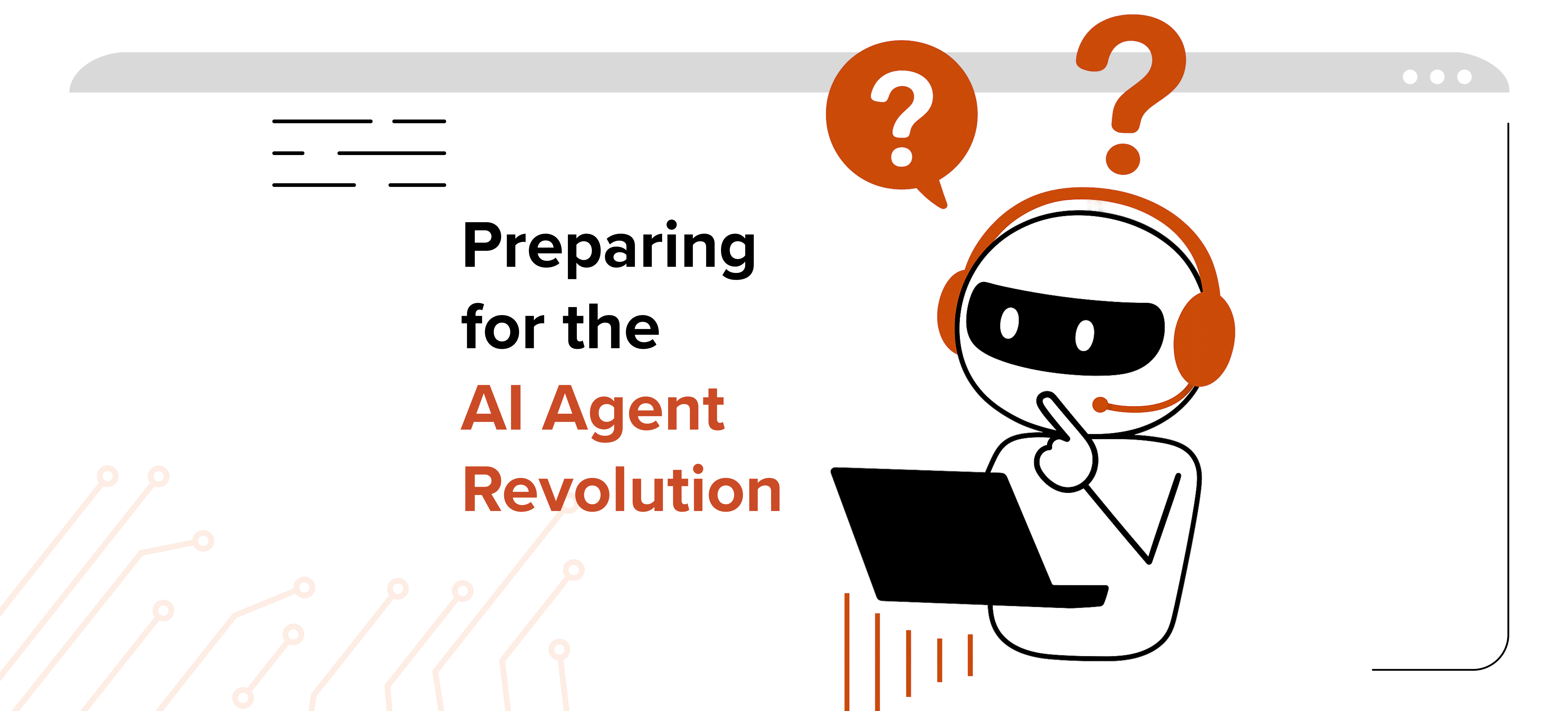AI Agents Have Arrived: The Clock is Ticking on AI Governance

“AI agents are coming!” If that phrase triggers flashbacks of Paul Revere, you're not alone. The alarm is justified—AI’s impact on business isn't just growing, it's accelerating at breakneck speed. Yet, merely recognizing this isn’t enough. Companies—especially their CIOs, CISOs, and CEOs—need to act decisively and strategically, starting right now.
Let’s break this down a bit, starting with the intriguing findings from METR’s recent research on AI agents. They’ve found something extraordinary: for the last six years, the length of tasks AI agents can complete autonomously (at a 50% success rate) has doubled roughly every seven months. Pause and consider this: it’s not just incremental improvements; it's exponential leaps in capability. Side note: yes, I know 50% success is not acceptable in business, check out their data, it's 100% accurate for short tasks.
The Adoption Readiness Gap
Sure, today’s frontier AI models can outperform humans on specialized benchmarks—but they’re mostly confined to reliably handling tasks lasting only a few minutes (METR). However, if this pace continues—and METR argues convincingly that even significant measurement inaccuracies wouldn't dramatically alter these predictions—generalist AI agents will soon be capable of reliably executing tasks spanning entire weeks. Imagine handing off a week-long analytical project, a complex debugging task, or a detailed market research initiative and seeing it autonomously managed by an AI agent. That’s not distant sci-fi; it's right around the corner.
 But here’s where reality kicks in: most enterprises aren’t even close to being ready. According to Architecture & Governance Magazine, 86% of companies acknowledge they’ll need substantial upgrades to their existing technology infrastructure to effectively deploy AI agents. And integration is a big part of this challenge—42% of enterprises report needing AI agents to access eight or more different data sources to function effectively (Architecture & Governance). If you’re picturing spaghetti junction in your data architecture, you're not far off.
But here’s where reality kicks in: most enterprises aren’t even close to being ready. According to Architecture & Governance Magazine, 86% of companies acknowledge they’ll need substantial upgrades to their existing technology infrastructure to effectively deploy AI agents. And integration is a big part of this challenge—42% of enterprises report needing AI agents to access eight or more different data sources to function effectively (Architecture & Governance). If you’re picturing spaghetti junction in your data architecture, you're not far off.
Security, too, remains a top concern—and understandably so. With 53% of tech leaders and 62% of practitioners flagging security as their number one challenge, the call to embed robust security into every stage of AI agent adoption is loud and clear (Architecture & Governance). The appetite for investment is there, with 68% of companies budgeting at least $500,000 annually and nearly half planning to build over 100 prototypes. Yet nearly half (48%) of respondents admit their current integration platforms are only "somewhat ready" (Architecture & Governance). That’s a worrying mismatch between ambition and readiness.
The Compelling Case for AI Adoption
So, if the tech isn’t fully ready, and the security landscape is uncertain, where are organizations placing their bets today? They're focusing pragmatically: IT service desk automation (61%), data analytics (40%), and code development (36%) top the priority list (Architecture & Governance). Clearly, companies see immediate operational value as the safest first step toward broader AI agent integration.
Now, let's layer on another critical piece—regulatory compliance. Deloitte's latest report reveals regulatory concerns as the number-one barrier to broader GenAI adoption, jumping sharply from 28% to 38% in just over a year (Deloitte). Companies recognize they must navigate an increasingly complex legal landscape if they hope to scale their AI initiatives sustainably.
But even amidst these challenges, the business case for AI remains compelling. Deloitte reports nearly three-quarters (74%) of organizations are meeting or exceeding their ROI expectations for advanced GenAI projects, with a remarkable 20% achieving ROI greater than 30%. Meanwhile, organizations are clearly looking forward, with a strong majority (78%) planning increased investment in AI next year, notably in agentic AI (52%) and multiagent systems (45%).
Yet, even as excitement grows, GenAI’s footprint remains surprisingly limited—fewer than 40% of the workforce currently have access, and less than 60% of those actually use it daily (Deloitte). Clearly, widespread integration into daily operations has barely begun.
The time for Agentic AI is NOW
Decision-makers face two stark realities right now:
- First, acting without a clear, future-ready AI governance framework exposes your organization to enormous risks—from compliance headaches to damaging hits to your reputation.
- Second, the AI agent your competitor builds today will be twice as powerful before year's end. Standing still is no longer neutral—it's actively dangerous.

We've seen firsthand through our partnerships that addressing these challenges simultaneously isn’t just possible; it's essential. Yes, the path forward might feel daunting, but with a thoughtful, strategic approach - and the right technology - it’s entirely achievable. The question you must answer is simple yet critical: will your organization set the pace or be forced to chase it?
The AI Governance Clock is Ticking
Integrating AI agents across your complex data landscape doesn't have to be a tangled mess. Tonic3 offers a streamlined approach to AI governance, providing the visibility and control you need to seamlessly integrate and manage your growing fleet of agents. Stop wrestling with complexity and start realizing the full potential of your AI investments with Tonic3.
Frequently Asked Questions
Regulatory compliance is the primary barrier to broader GenAI adoption, with concerns rising sharply, as reported by Deloitte. Companies must navigate complex legal landscapes to scale their AI initiatives sustainably.
To implement effective AI governance, business executives should start by assembling a cross-functional team that includes IT experts, legal advisors, and business leaders. This team should collaborate to define the company's AI strategy and establish clear governance structures. Key aspects include setting ethical guidelines, ensuring data privacy and security, maintaining regulatory compliance, and fostering accountability and transparency. Continuous monitoring and adaptation of governance policies are essential to keep pace with technological advancements and market changes.
The urgency in implementing AI governance stems from the rapid evolution of AI technologies and the increasing reliance on AI in business operations. As AI becomes more integral to decision-making processes, the potential risks and regulatory requirements grow. Implementing governance frameworks now ensures that organizations can harness AI's benefits responsibly while mitigating risks and maintaining compliance.
Companies face significant challenges, including the need for substantial upgrades to their technology infrastructure, integration complexities involving multiple data sources, and security concerns, as highlighted by Architecture & Governance Magazine. With 53% of tech leaders and 62% of practitioners flagging security as their number one challenge, the call to embed robust security into every stage of AI agent adoption is loud and clear (Architecture & Governance). The appetite for investment is there, with 68% of companies budgeting at least $500,000 annually and nearly half planning to build over 100 prototypes. Yet nearly half (48%) of respondents admit their current integration platforms are only "somewhat ready" (Architecture & Governance).
AI governance offers strategic advantages by enabling organizations to harness AI's potential responsibly. It allows businesses to drive innovation while maintaining control, ensuring that technology serves the organization effectively. By investing in robust governance frameworks, executives can unlock AI's benefits and safeguard their organizations against potential risks, providing a competitive edge in the market.
Organizations are focusing on immediate operational value by prioritizing IT service desk automation, data analytics, and code development as the first steps toward broader AI agent integration.
Schedule a Demo and Start Moving Forward





.jpg)

